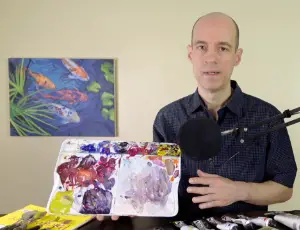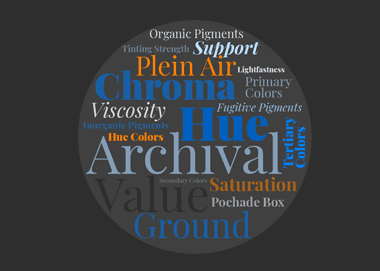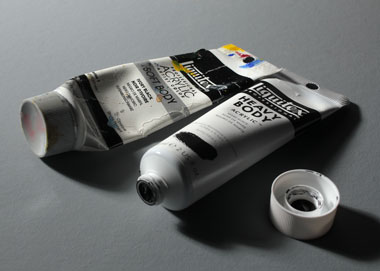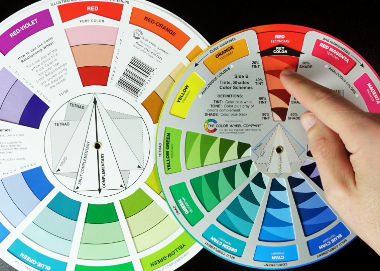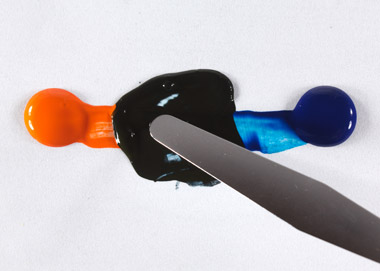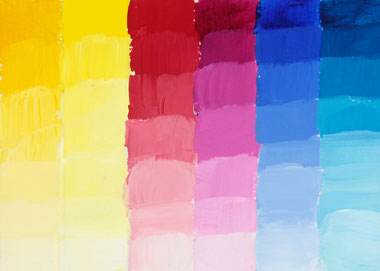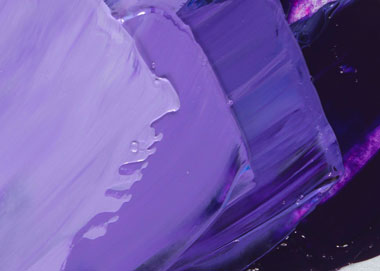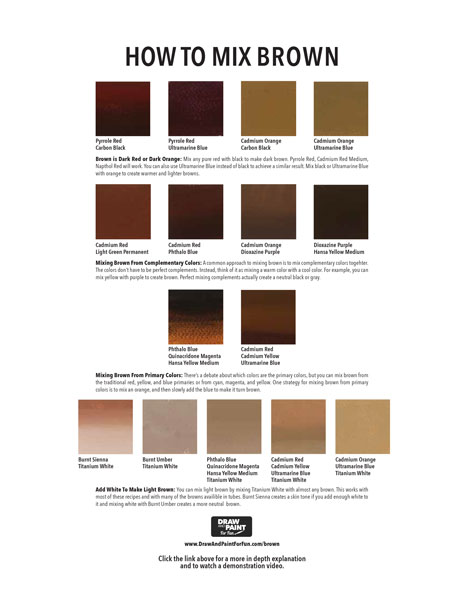
In this post, I demonstrate how to mix brown, dark brown, and light brown. I include a video demonstration and a free PDF that contains all of the recipes for mixing brown. These formulas will provide similar results in acrylics, oils, watercolor, and gouache.
How do you mix brown? Brown is basically dark red or dark orange so the easiest way to make brown is to mix orange with black or Ultramarine Blue. To make dark brown, mix any pure red in with black or Ultramarine Blue. Another popular recipe for brown is to mix complementary colors, such as orange and blue or yellow and purple. Add Titanium White to any brown to make light brown.
Color mixing recipes can be useful but you really want to get to the point where you can mix any color that you need. That’s the goal of my color mixing course below.
In this course I teach the color mixing techniques that I use in my social media color matching videos. It's for beginners and advanced painters. It includes 60 minutes of video.
Click here to download the free guide on how to mix brown.
While the above answer may be enough to get you started, brown is a complicated topic. One reason for this is that brown isn’t on the color wheel so it’s not clear how to go about mixing it.
In this post, I explain why brown isn’t on the color wheel, how to mix brown from the primary colors, and from complementary colors. I explain why mixing red with blue creates brown instead of purple. I also identify the exact pigments that I use so you can easily replicate the results.
Learning how to mix brown will help you to better understand the basics of color mixing. You will be able to mix the exact shade that you need instead of settling for only the tubes of brown paint that you have on hand.
If you’re just getting started with painting and need help with learning how to mix colors, you may be interested in downloading my free acrylic color mixing chart. All of the color mixing recipes in the chart only require two colors and it contains 7 recipes for mixing brown.
Table of Contents
Color Mixing Demonstrations
Below are all of the color mixing demonstrations, you can also watch my YouTube video on how to mix brown which covers most the same material.
The Easiest Way to Make Brown and Dark Brown
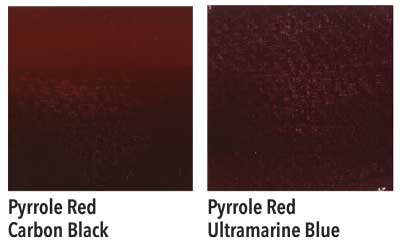
The easiest way to make dark brown is to mix a small amount of black with red. The red will darken slightly, but then it turns brown as you add more black.
Any bright red will work. In this case I’m using Pyrrole Red, but you can also use Cadmium Red Medium, or Naphthol Red.
Color is subjective so when you only add a little bit of black you may perceive it as dark red. But as you continue to add more black it turns dark brown, similar to the color of chocolate.
For example, the shadow areas of the apples in the painting below are dark brown.
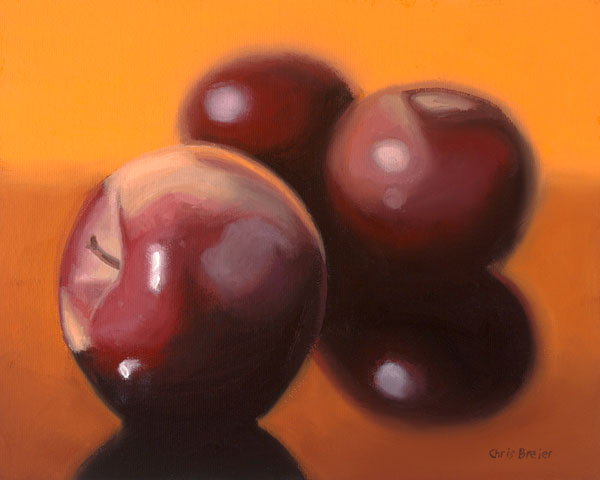
It may help to paint a small swatch of it on a scrap of paper so you can view it in isolation. What may look like dark red on the palette will look more like brown when you view it by itself.
Another formula for mixing dark brown is to mix pure red with Ultramarine Blue. This will produce a brown that’s very similar to the brown that you can mix from red and black.
You may be thinking that mixing red with blue will create purple, but it actually creates brown. For an in depth explanation as to why this is, you may want to read my post about how to mix vibrant purple.
It may surprise you to learn that red is not a primary color and that you can mix your own red. In that post, I explain how you can mix red and elaborate on the color theory behind this.
Color theory isn’t as simple as what they teach in school which is why you may have trouble mixing purple or brown. Color mixing will become second nature once you learn how to deal with these surprises.
The Easiest Way to Mix Brown
You can mix a lighter brown that’s similar to a coffee color by substituting orange for the red in the above recipe. So you can make brown by mixing Cadmium Orange with Carbon Black or Ultramarine Blue.
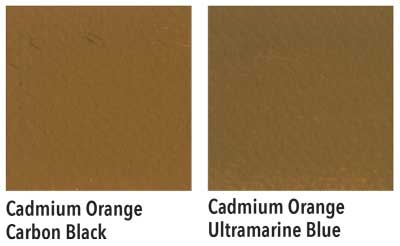
The result is similar to Yellow Ochre or Yellow Oxide.
The difference between adding black or blue is slight. Although, the Ultramarine Blue does make it slightly more green than if you were to use black.
Of course you can add small amounts of red to make it more reddish.
Orange and blue are complementary colors. I provide more examples of complementary colors that you can mix to create brown later in the post.
How To Mix Brown From Primary Colors
First, I have to address the fact that there’s been a long standing debate as to what the primary colors for painting are.
The traditional primary colors are red, yellow, and blue. The alternative primary colors are cyan, magenta and yellow. You can use either sets of primary colors to make great paintings.
Fortunately, you can also use either set of primary colors to mix brown as shown below.
Mixing Brown from Red, Yellow, and Blue
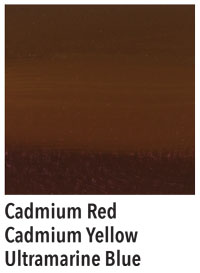
The traditional primary colors for painting are red, yellow, and blue. There doesn’t seem to be a universal standard for which shade of red, yellow, and blue are the primary colors.
There are a number of factors that influence artists to choose different sets of primary colors. For example, some pigments are transparent while others are opaque.
In watercolor painting, there are other variables to consider such as whether you want to use a pigment that’s prone to granulation or maybe you prefer using staining colors.
Cadmium Red, Cadmium Yellow, and Ultramarine Blue are often the colors artists use as the primary colors so I’ll use those for the demonstration.
The simplest way to make brown from the primary colors is to mix Ultramarine Blue with Cadmium Red as I demonstrated at the top of this post.
With those two colors you can mix dark brown. You don’t even need to add the Cadmium Yellow unless you want to make it lighter and more orange.
The real primary color is magenta, and red is a secondary color that’s the result of mixing magenta with a small amount of yellow. You can verify this for yourself by mixing Quinacridone Magenta with Hansa Yellow Medium–it yields a transparent red.
In a way, whenever you add red to a color mixture, yellow is going along for the ride. This explains why mixing Pyrrole Red with Ultramarine Blue produces brown. This is because the small amount of yellow in the red causes the purple to turn brown.
If you want to mix brilliant purple try using Quinacridone Magenta instead of red. Magenta doesn’t contain yellow so it creates a pure purple when you mix it with Ultramarine Blue.
The theory behind this isn’t as important as being able to produce results. You want to be able to mix whatever shade of brown or purple you need without a struggle.
Mixing Brown From Cyan, Magenta, and Yellow
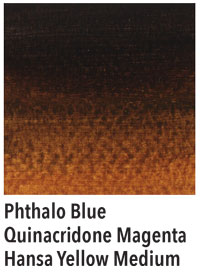
The primary colors that are used in the printing process are an alternative to the traditional primary colors. They do produce a wider range of colors, especially when it comes to mixing greens and purples.
The pigments that I find are closest to the printing primaries are Phthalo Blue, Quinacridone Magenta, and Hansa Yellow Medium.
There’s a variety of approaches to mixing brown from primary colors.
One method is to start by mixing orange by mixing Hansa Yellow Medium with a small amount of Quinacridone Magenta. Then slowly add very small amounts of Phthalo Blue to create brown. I should note that any magenta that contains white, such as Medium Magenta, won’t work as well.
If you want to mix dark brown, start by mixing Quinacridone Magenta and Phthalo Blue, then add small amounts of yellow to it.
These colors are very potent and transparent so adding too much of one of the colors is easy to do. Start by making small adjustments. You may have to practice a little to get the hang of it.
It’s possible to make pure black by mixing these colors, as I demonstrate in my video about mixing black at the bottom of this post.
You have to get the proportions correct in order to mix neutral black from these colors. Brown is what you get when the proportions are off. So you may want to practice mixing black and brown from these primaries.
Mixing Brown From Complementary Colors
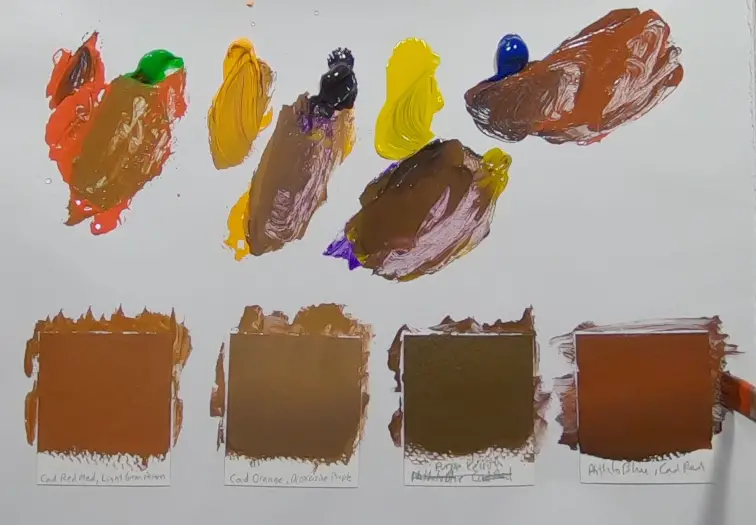
Many of the color mixing recipes for brown are based upon the idea of mixing complementary colors.
Complementary colors are usually defined as the colors that are opposite of each other on the color wheel.
There’s also the concept of mixing complements that are two colors that create a perfectly neutral gray when you mix them. I demonstrated this in depth in my video about how to mix black.
If the two colors aren’t perfect complements, they will create what’s known as a “near neutral” which is also known as an achromatic color. This is what you’re looking for because that near neutral is usually some shade of brown.
Since we’re not trying to mix a perfectly neutral gray, try mixing a warm color with a cool color. See the free PDF at the top of the post for some ideas.
What Colors Make Light Brown?
The simplest way to make light brown is to mix Titanium White with brown paint from the tube as shown in the next section. But if you don’t have brown on your palette you can mix one using any of the formulas on this page and then add white to it.
Burnt Sienna and Titanium White
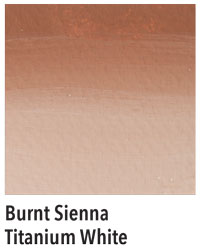
The most obvious way to mix light brown is to mix brown from the tube with Titanium White.
If you have Burnt Sienna you can mix it with Titanium White to create a light brown that has a reddish tint to it. Adding more white creates a warm tan that’s similar to a flesh color.
Add a very small amount of Ultramarine Blue to the light brown if it’s too warm for your preference. Another option for achieving a cooler brown is to start with a brown that is less warm.
One thing to keep in mind is that Ultramarine Blue and Burnt Sienna are mixing complements. When you combine them in the right proportions it will create a neutral black.
In this case, since you’ve added white to the Burnt Sienna, adding more Ultramarine Blue will create gray.
Burnt Umber and Titanium White
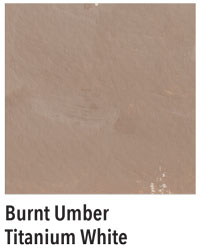
Some browns have more neutral appearance than Burnt Sienna, and Burnt Umber is such a brown. Mixing it with white will create a light brown that’s more neutral than Burnt Sienna.
The result is a light brown that’s cooler than what you can achieve with Burnt Sienna.
Keep in mind that Burnt Umber is different than Raw Umber. Raw umber will produce a warm gray when you mix it with white.
This can be useful if you want you mix grays that have more life to them than a completely neutral gray.
Cadmium Orange, Ultramarine Blue, and Titanium White
If you don’t have brown on your palette, you can use any of the formulas in this post to make brown and then add the white to make light brown.
Some of the formulas work better for mixing light brown than others. The dark browns that you can mix from red don’t work as well as the warmer browns that you can mix from orange.
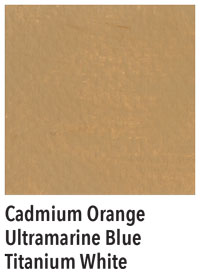
The color swatch above is a mixture of Cadmium Orange, Ultramarine Blue, and Titanium White.
The result is a color that’s a good substitute for Yellow Oxide.
If you’re trying to mix beige or tan, you may want to add some Ultramarine Blue to neutralize the orange so it’s less saturated.
How much blue you should add depends upon how much you want to neutralize the orange. It depends upon if you want a light brown that’s warm or cool. Either way, be careful to not add too much blue or it will turn green.
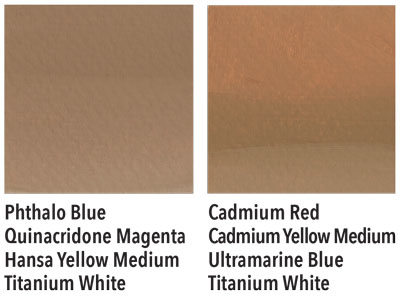
You can also add white to any of the browns that you make from the primary colors. The examples above contain a variety of light browns made from primary colors.
What’s the Difference Between Beige, Buff, Tan, and Taupe?
These colors are variations of light brown. According to Behr, the manufacturer of house paint, these are all variations of light brown with different undertones.
For example, Behr explains tan is light brown that has yellow undertones, beige has orange undertones, and Taupe has blue or black undertones.
However, most of these colors aren’t available as tubes of paint. For example, I don’t have any tubes of “Taupe” in my studio.
The only exception is Buff Titanium, which is also known as Unbleached Titanium. It’s similar to Titanium White but it has a warm tone to it.
Sometimes Titanium White can be too stark and artists use Buff Titanium instead to give their paintings an overall warm tone.
According to Wikipedia, “buff” is a reference to the color of buffed leather.
The names of colors that are popular in the fashion or interior design industries don’t often apply to painting.
As a painter, the names for the most common artist’s paints are worth learning and becoming familiar with. Manufacturers are generally consistent with the names of colors when it comes to the most common pigments.
Mention Ultramarine Blue or Burnt Sienna to an artist and they’ll know exactly what you’re talking about.
Where Is Brown on the Color Wheel?
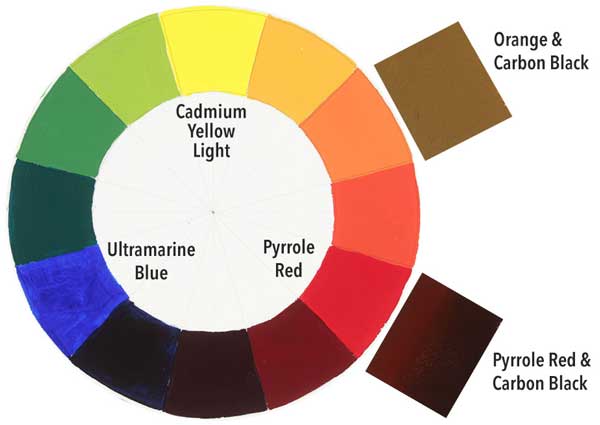
Brown is dark red so if the color wheel showed the shades of each color, brown would be the darker shade of red or orange.
Most color wheels only show the pure colors but not the tints or shades of colors.
Tints are when you add white to a color to make it lighter. The shades are when you add black to a color to make it darker. You can read more about tints and shades on Wikipedia.
I think that most color wheels don’t include tints or shades because it quickly becomes complicated.
It also raises some thorny color mixing conundrums. For example, mixing yellow and black creates a dull green. You can read more about this in depth in my post yellow and black makes green.
Another problem with color wheels is that some of them were created by graphic artists who arrange the colors based upon beliefs instead of actual experience of mixing colors from paints. The colors found on most color wheels weren’t created by mixing actual pigments.
You may notice that brown is actually on the color wheel if you mix red and blue and show the results. Most color wheels replace the brown with a premixed purple.
What Is the Opposite of Brown?
Complementary colors are the colors that are opposite of each other on the color wheel. Since brown isn’t found on most color wheels, people often wonder what the opposite of brown is.
Since brown is a dark orange or dark red, the complement of brown would be a dark blue or dark blue-green.
One thing to keep in mind about color wheels is that many of them aren’t very accurate.
The reason I mention this is that complementary colors are very loosely defined on the color wheel. I think of the traditional red yellow and blue color wheel as a very simple and basic way to organize colors into a spectrum.
The colors that are placed opposite of each other aren’t necessary mixing complements. They won’t yield a perfect gray when you mix them. According to Wikipedia, these would be classified as “near neutrals” and they classify browns as a neutral. The article also states that gray is a pure achromatic color as are black and white.
As a side note, creating a color wheel based upon mixing complements isn’t a simple solution either, but that’s a topic for another post.
Anyway, to neutralize brown you can add blue to it. Mixing Ultramarine Blue with Burnt Sienna or Burnt Umber will create a neutral black.
In my YouTube video above, I begin by demonstrating that you can make black by mixing Phthalo Blue with Van Dyke Red. So Phthalo Blue is one of the mixing complements of Van Dyke Red.
Conclusion
This post is longer than what I originally thought was necessary, but I love color and I enjoy exploring it in depth.
More importantly, I like conducting color mixing experiments and seeing what the results are. Experience is more important than theory because you can apply it to your painting.
Being able to mix whatever color you need at the moment is a crucial skill, so I think it’s worth spending some time learning more about it.
I hope this post will help you to become more adept at mixing colors.


